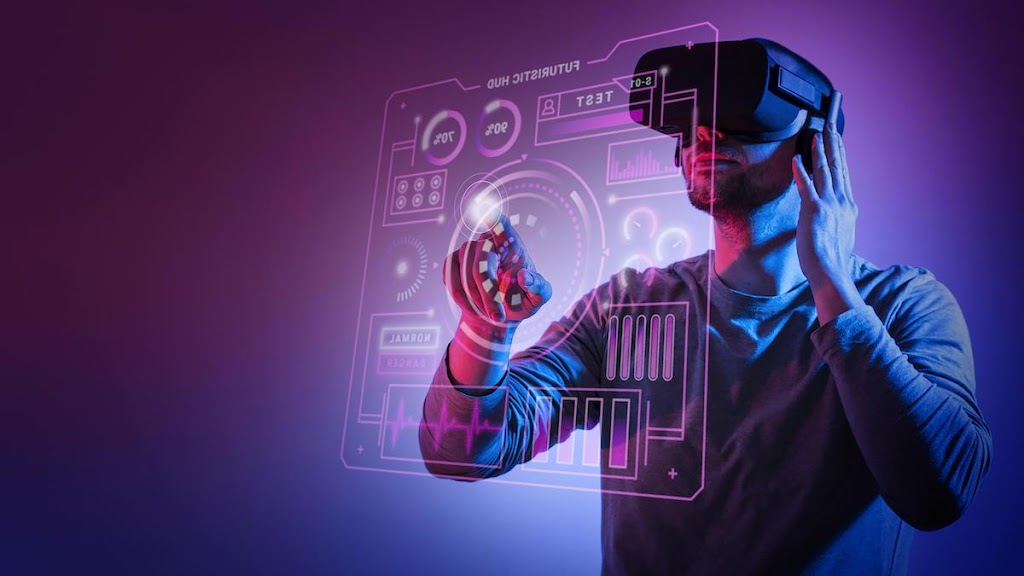ABSTRACT
Communication has changed over time. We have come a long way after the emergence of the Internet. The next big arch that is about to come after the internet is the Metaverse. The main objective of this blog is to understand the concept of the Metaverse and what challenges it brings along. Is there a future to the metaverse and if any, what kinds of IP Rights are to be dealt with? Is this a vertical to business regarding metaverse in the long run? How much is one willing to spend on the protection of virtual digital assets? Would we have to see protection in every country that we have a business interest in? Are the governments ready for such a big leap? Metaverse is a whole new concept and it brings about a lot of questions with it. This blog tries to throw light upon the challenges it comes with along with its solutions.
KEYWORDS
Metaverse, NFTS, VDR, Infringement, Internet, Social media, Privacy, Rights
INTRODUCTION
The Metaverse is a concept of an online, 3D universe that connects users in all aspects of their lives and combines multiple different virtual spaces. It can be considered a future iteration of the internet. Games, for example, were initially considered to be the smallest iteration of the initial stages of the metaverse. However, the virtual environment has extended to interactions, work, online concerts and so on. Although the metaverse is still at the very initial stage of its development, there is an intelligible future to its concept of it. It is predicted that the metaverse will be ubiquitous just like the internet in the coming decade. The final materialization and the fully developed structure of the metaverse are yet to be known. How it would go about and the shape of it is yet to be decided. It could also prove to be a huge business opportunity for brands as per their requirements.
IP RIGHTS
The traditional IP Rights include patents, trademarks, copyrights, designs, geographical indications and so on. The question here is, will the same be prevalent concerning metaverse or is there space for something new? The intellectual property right is certainly going to have to be protected and there is no way we can ignore it. We have already noticed the budding interest of various companies in blockchain technology, virtual digital currencies, assets, tokens, etc. Governments of various countries have started monitoring these assets. Several brands have already started filling trademark applications concerning the concept of the metaverse. This could prove to be a step forward towards the virtual world. With this technology moving forward, the filling of patents, designs and copyrights will certainly come into the picture too.
Apart from these, there is also scope for privacy and licensing issues. With the ownership of a virtual digital asset, monetizing it comes next. In the present scenario, a license is granted on trademarks, copyrights, etc. It is not too far-fetched to understand that a virtual digital asset today within the metaverse could be licensed. So, we are going to have to deal with licensing issues and prices about licensing. Another prima facie question is whether the agreements will be smart contracts or will the agreements be on paper. A smart contract is an algorithm that works on a particular set of instructions inbuilt into it. It can be a huge possibility for a virtual digital asset (VDA). However, for this to come into action, several amendments will have to be required to the Contract’s Act. The present set of rules and guidelines govern the physical assets amicably but there are no set instructions for virtual contracts.
With the ubiquitous presence of the internet, we have certainly compromised a lot concerning privacy. With the instillation of the internet in our lives, we can’t secure our privacy. With social media coming up, there was an increase in the number of pictures being put up which could be easily taken, utilized, or misused and your accounts could be hacked. There have been numerous cases of privacy that have already occurred with the internet being part of our lives and there are going to be even more. In a metaverse, our digital avatar gets certain rights such as the right to interact, the right to buy, etc. A lot of personal information will have to be put in such as credit card details to purchase an NFT of a digital object in the metaverse. The security, terms of use and privacy policies they have will thoroughly have to be checked. Certain documents will have to be crafted and put up by these metaverse platforms.
INFRINGEMENTS IN THE METAVERSE
We have already witnessed infringement issues concerning social media and the dark web. With our brands being concerned as assets enabled in a digital avatar, there are going to be infringements in the metaverse. We have had cybersquatting, dilution of brands, brands being stolen, misrepresentations, etc. on the internet, social media and marketplaces. With a whole new virtual dimension coming up, such issues are further going to increase.
In the popular case of Hermes International v. Rothschild, the popular luxury brand Hermes sued Mason Rothschild over the use of metabirkins. The metabirkins were NFTs that depicted Hermes’ famous bags which were called the Birkin Bags. Hermes’ lawsuit said Rothschild began offering their famous NFTs at the Art Basel art fair in Miami in December without its permission and had sold over $1 million worth of them by early January. Rothschild defended by saying that metabirkins are variations of Berkin Bags and are not the same, Berkin Bags have a different class and so on. The matter is still under consideration and the final judgment is not yet come. It is interesting to note the number of people willing to buy these infringed products. There is a supply and there seems to be high demand as well. The companies and luxury brands have become aware and have started taking actions against such infringements. Several other brands have started taking interest in the metaverse because of the marketing department and have started asking their lawyers to cover virtual digital assets (VDAs).
Another such case is that of Nike v. Stockx. Nike sued an online resale platform called Stockx. Stockx incorporated Nike’s images and created their whole line of NFTs. These NFTs were minted by Stockx and had images of Nike’s sneakers. They said that there has been unauthorized use of Nike’s trademark and it constituted trademark infringement and other violations as well. Nike has been at the forefront of protecting its marks in the virtual digital environment because they foresee it as a new verticle. They believe that they could sell Nike digital sneakers in the metaverse via their store. One could buy a Nike shoe in the metaverse, which could be linked to a store in the real world and the person could pick up the same shoe physically. There are endless possibilities to what could happen within the metaverse.
SOLUTIONS TO INFRINGEMENTS
The first thing to be kept in mind is checking if the trademark coverage that one opts for covers the virtual digital assets or not. Secondly, the brand should keep in mind the business prospects that it wants to work on. In case one plans to move forward like Nike, one should protect its brand logo at any cost and protect its rights. In case one does not see a future in the virtual digital environment, one must think before filing any kind of application or making any investment. Thirdly, one should take a clear look at the ‘Take Down Policy’ and ‘Terms of Use’ before stepping into anything. Most websites have such policies but most NFT marketplaces and metaverses don’t. There need to be strict regulations regarding the same. These need to be put up to protect the consumer, to protect the brand owner, to ensure that there is no infringement and if any, there needs to be a solution, maybe a takedown policy which one could avail of to bring the infringement down and remove from the metaverse. Therefore, the government will have to crack down and devise a policy for these marketplaces and for these metaverses to adopt them when they set them up and offer them to their consumers. Lastly, Copyright Coverage is also very important for the enforcement of such rights. Filing for copyright gives one a document that one can utilize to enforce one’s right especially when it is online. As a result, there might be a slight increase in the filing of copyrights soon.
CONCLUSION
If a trademark would have been infringed by a party utilizing it to publicize or sell its goods, the original owner would enforce its rights towards that particular party. However, when we talk about the metaverse, if such kind of infringement occurs, would it be covered under the same laws that exist today or is there a need for improvement? The judgments from the above-mentioned cases will hopefully clear all conundrums and pave way for a whole new virtual world. Metaverse is no more a future concept. It has made its place in the present time and brands have already started to take note of it. There have been several filings regarding the same. Another Pandora’s box is about to be opened just like the Internet. Governments across the world are at different stages of adoption and acceptance of the metaverse. Some countries are trying to come up with certain policies whereas some have already come up with a few. There is a lot to come about and there is a need for amendments to the existing laws as initially they were set up for the physical world and not the virtual domain. Metaverse is going to be a part and parcel of our lives and there is no point in ignoring it now.
THIS BLOG IS AUTHORED BY KHUSHI YADAV, A STUDENT OF FAIRFIELD INSTITUTE OF MANAGEMENT AND TECHNOLOGY, AFFILIATED TO GGSIPU.



